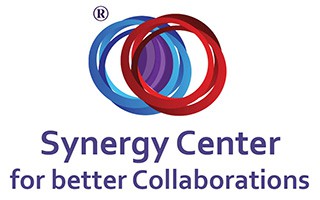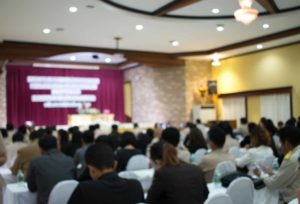As a senior manager or proprietor of your organization, you’re in the best position to understand its weaknesses and resource constraints. Your organization is more vulnerable to “illness” during the change processes. For example, during change of leadership, assimilation of new procedures, technology or culture, mergers and acquisitions and improvement of customer service experience.
And because synergy involves mutual creation of a new reality, it’s important to define the purpose of the synergy process, and, importantly, how to achieve it. However, synergy isn’t a chance occurrence – it requires deliberate planning and execution. And planning involves defining purpose and objective, but you need resources to ensure everything goes as planned. That’s why it’s important for you to evaluate the resources. There are three types of resources you need to examine:
- Internal
- External
- Supporting processes
This article is going to examine each one in detail. Read on.
Internal Resources
-
Leadership and Commitment
Synergy must occur at the highest degree at the administrative level of an organization. And because it’s difficult to achieve and maintain, you need to sacrifice your time and effort. This means that you’ve to demonstrate a high level of commitment to the process if you’re serious about assimilating synergy across the whole organization. Your level of involvement must be direct and high.
Your involvement and commitment are critical resources for successful formation of synergy. You can evaluate whether this commitment level is present at personal level. If you’ve not attained it, you can make efforts toward that. Moreover, it should be clear from the outset who’s going to steer the process — it could be the CEO, the VP, or a senior manager.
-
Steering Committees and Change Management Teams
Nowadays, in an organization, changes occur frequently and speedily – and it can be a challenge to keep up with the latest developments. Therefore, change management is a must-have skill. Change processes necessitate the need for synergy creation, but planning and execution of synergy require a strategic direction and resources.
Depending on your choice of which senior figure in your organization should steer the synergy process, it’s important that they lead a steering committee. Having a leader at the top of the process would ensure liaison, guidance, assistance and resource mobilization toward the process. The team is a framework in which the members can brainstorm on various issues.
-
Time and Capital
Your evaluation of resources should inform your estimation of how much the synergy assimilation process would cost and whether your organization has sufficient means to raise that capital. In addition, ensure that you’ve allocated enough time for the whole process. Synergy isn’t something that happens overnight – it takes time.
The process between the definition of purpose of synergy or new reality and the moment when employees have successfully integrated (or assimilated) new interactions in their work routines is lengthy. That’s why planning and budgeting – in terms of cost and time – are important.
For example, ensure you allocate your committee members enough time to execute necessary actions. To assure seriousness and commitment, the meetings should form part of the normal work schedule and routine – not personal time. Creating time schedules, slotting timeframes for the meetings, perhaps two hours every week, or two times per month, can ensure complete devotion to the meetings.
Time and money are scarce resources. Nonetheless, this shouldn’t hold you back from assimilating the synergy process. You can use Dr. Rami Ben-Yshai’s work tools, practicable concepts and methods to speed up the process and to ensure that it’s effective. While the costs – in terms of time and effort – may seem significant, they contribute to the increase in your organization’s outputs.
External Resources
Sometimes, the resources that the organization has on hand may not be insufficient or absent. In such a case, an organization may seek to recruit external resources to supplement what they already have. When evaluating resources, it’s important to consider three factors:
- Availability
- Scarcity
- Type e.g. physical and intellectual resources, such as expertise, legal or accounting, and technological knowhow.
Skills, talents or expertise outside the organization aren’t easy to acquire; hence, it’s important that you retain them as part of organizational memory once the outsider’s contract expires or ends.
Supporting Processes
For your organization to be effective and efficient, there must be processes supporting them within. It’s important to evaluate whether these processes exist in your organization.
- What’s available
- What requires change for greater effectiveness
For example, decision-making. If your organization is implementing a one-way, “top-down” communication pattern, then perhaps your decision-making organ requires changes. A decision-making process in which all parties involved contribute is recommendable. You can also evaluate time management processes in your organization: are they present, and can you make them to serve the assimilation of the synergy process?
Some processes support human resource management:
- Workshops
- Training
- Reward systems
- Remuneration systems
- Employee evaluation
Your evaluation of these processes can enable you to ensure managers and employees participate in the synergy assimilation process and the creation of a new organizational reality. For you to assimilate the process successfully, be sure to increase familiarity with the language, recruit support, expand participation, and relate the synergy method and the formulation of a new reality with the employees and managers. You can create this association by arousing a feeling of “connectedness” to the process. When managers and employees identify with the process and feel part of it, change resistance can reduce.
-
A Case of a Public Relations Company
It wasn’t a large organization, and its mission was to improve interactions. The organization employed 40 employees, and implemented a reward system, which awarded bonuses in monetary terms. However, the organization was facing problems with the distribution of the yearly holiday bonuses.
A year before, the owner decided what bonus to award to whom. Consequently, a perception of favoritism was developing, and many employees were growing bitter. To them, the owner’s reward system wasn’t fair. In terms of synergy, a feeling of invasion had developed.
Dr. Ben-Yshai investigated the root causes of these feelings, and how best to remunerate the employees. It was suggested that a yearly lump sum or a constant salary increment should be determined on the basis of the quality of employee’s performance during the last year. No more, no less.
It was a welcome decision by the owners of the organization and about half of the workforce. The organization integrated the bonus into employee’s salaries. This is an example of how the involvement of employees in the support processes contributes to the creation of synergy and new reality. The employees had an opportunity to express their grievances with regards to the remuneration. Job satisfaction increased, feelings of unfairness reduced, and the resistance to change was minimized.
In Summary…
Synergy’s like a bubble – a new reality, because everything within that bubble is shared by everyone who’s involved in its creation. Even so, attaining that bubble isn’t easy, and everyone who created it must maintain it to show appreciation of this fact. Definition of objectives and resource mobilization indicate that synergy assimilation process and creation of new reality aren’t things to be taken for granted.



